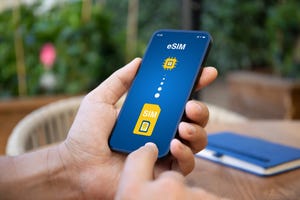AT&T treads carefully with ramped up FWA rollout
AT&T is keen to take on T-Mobile and Verizon in the 5G fixed-wireless access (FWA) market, but not at the expense of mobile customers or its fibre business.
August 23, 2023

AT&T is keen to take on T-Mobile and Verizon in the 5G fixed-wireless access (FWA) market, but not at the expense of mobile customers or its fibre business.
Having hinted at a broader rollout of Internet Air earlier this year, the US telco this week announced its arrival in 16 new locations coast-to-coast, and said more markets will get it in future.
It offers uncapped data for $55 per month before taxes, and comes with no equipment costs, or annual contract. That’s broadly in line with T-Mobile and Verizon, which each offer FWA from $50, although cheaper rates are available for existing mobile subscribers.
Using its app, AT&T reckons Internet Air customers can self-install and be up and running in as little as 15 minutes. For an extra $10 per month, it will supply mesh networking gear to help customers tackle any persistent notspots.
To call this a nationwide launch of Internet Air would be a bit of stretch though. AT&T has been clear throughout the service’s development that it is targeted at a relatively small group of prospective customers. More specifically, customers who until now have relied on AT&T’s ageing DSL network for their fixed broadband and who are unlikely to get fibre coverage any time soon.
AT&T is also only prepared to offer Internet Air in locations where it has sufficient mobile capacity – it doesn’t want to jeopardise the 5G mobile experience for the sake of a few data-hungry cord-cutters.
“Over the past year, our team has been hard at work identifying customer pain points, like legacy Internet options, and created a solution by utilising available network capacity in areas that are less densely populated while still providing a strong connection. Thus, AT&T Internet Air was born,” said Erin Scarborough, president of broadband and connectivity initiatives at AT&T, in blog post.
“We’ve already rolled out AT&T Internet Air to existing copper-based customers with great success. As we begin to scale, we are hyper-focused on selecting locations with enough wireless coverage and capacity to deliver not only a great in-home experience, but also maintain a top-notch wireless service for our existing mobile users.”
It is understandable that AT&T wants to avoid irking mobile users and cannibalising its fibre base, but FWA’s popularity in the US is impossible to ignore. Indeed, AT&T’s rivals have been only too happy to capitalise on the opportunity.
Stats published last week by Leichtman Research Group revealed that T-Mobile and Verizon’s FWA customer bases weighed in at an impressive 3.7 million and 2.3 million respectively at the end of June. Together they added a combined 893,000 customers during the second quarter.
According to Leichtman, during that same three months, big US cablecos – with the exception of Charter – all recorded net customer losses at their broadband operations. Telcos also notched up losses at their fixed-line businesses, as gains by Verizon more than offset steep declines at AT&T and Lumen.
With stats like these, the question for AT&T is whether it can afford to tread carefully with Internet Air.
Get the latest news straight to your inbox. Register for the Telecoms.com newsletter here.
About the Author(s)
You May Also Like











_1.jpg?width=300&auto=webp&quality=80&disable=upscale)


.png?width=800&auto=webp&quality=80&disable=upscale)